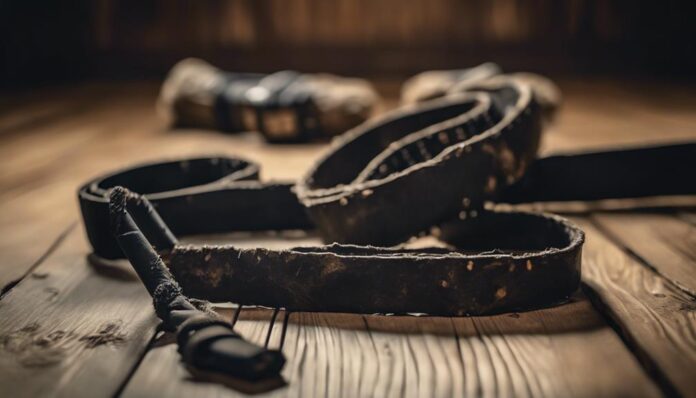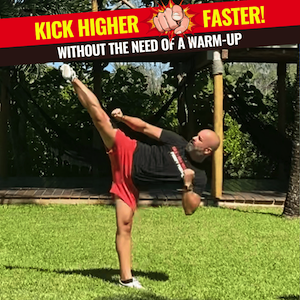As a martial artist over 40, you're more prone to injuries due to age-related performance barriers. Your muscle strength and flexibility decrease, proprioception declines, and recovery times lengthen, making it essential to modify your training routines. Improper technique, overexertion, and high-impact training methods can elevate your injury risk. Wear and tear on your joints and muscles accumulate over the years, making you more susceptible to injuries. To prevent injuries and maintain physical wellbeing, you need to adjust your training intensity and techniques. By understanding the causes of injuries, you can take the first step towards a safer, more effective training approach.
Age-Related Performance Barriers
As you enter your 40s, the physical demands of martial arts training can become increasingly intimidating. You're not alone in feeling this way – many martial artists over 40 experience age-related performance barriers that can lead to higher injury risks during training.
Decreased muscle strength and flexibility are just a few of the physical limitations that become more apparent with age. Injuries happen when you push your body beyond its capabilities, and ignoring these limitations can exacerbate existing issues like hip, shoulder, and knee pain.
Your recovery time also increases with age, making it vital for you to listen to your body and modify exercises to accommodate any nagging injuries. Joint stiffness and slower recovery necessitate a greater emphasis on warm-up routines and cool-down stretching to prevent injuries.
It's important to acknowledge these age-related performance barriers and adjust your training accordingly. By doing so, you can minimize the risk of injury and maintain a healthy, productive training regimen.
Don't let age-related performance barriers hold you back – take proactive steps to mitigate their impact and continue training safely and effectively.
Common Causes of Injury
Decreased physical capabilities and age-related changes greatly contribute to the heightened risk of injury in martial artists over 40.
As you age, your flexibility decreases, recovery times slow, and muscles and joints become stiffer, making you more prone to injuries. When you train, you're more likely to experience knee and elbow issues, often due to improper technique or high-impact training methods.
Common causes of injury in older martial artists include:
- Improper technique: As you age, your muscle strength and flexibility decline, leading to poor form and increased risk of injury.
- Overexertion: Returning to training after a break can lead to overexertion, as your body is no longer accustomed to the demands of martial arts training.
- Decline in proprioception: Your ability to sense the position and movement of your body declines with age, making it harder to prevent hyperextension and stabilize joints.
- High-impact training methods: Training methods that involve high-impact movements, such as jumping and kicking, can put excessive stress on joints, leading to injuries.
To minimize the risk of injuries, it's crucial to adjust your training to accommodate your age-related changes.
Impact of Wear and Tear
Martial artists over 40 must confront the consequences of years of intense training and cumulative wear and tear on their joints and muscles. As you age, your body's ability to recover from injuries and manage the effects of wear and tear declines.
You may notice increased stiffness in your joints, making you more susceptible to injuries during training and sparring. Chronic conditions, such as knee or shoulder issues, can be exacerbated by continued high-impact activity, leading to common injuries in practitioners over 40.
Research indicates that recovery time from injuries increases with age, leaving you more vulnerable to re-injury. Additionally, your proprioception – the ability to sense body position and movement – declines, increasing the risk of injuries during dynamic activities.
To mitigate the impact of wear and tear, it's vital to prioritize proper warm-ups and recovery routines. Your body requires more time and care to manage the effects of years of training, so don't neglect these essential steps.
Training Intensity Vs Capability
Pushing your body beyond its limits can have devastating consequences, particularly as you age. As a martial artist over 40, you're likely to experience a decline in physical capabilities, which can lead to a mismatch between your training intensity and your body's ability to recover and respond. This increases the risk of injuries.
When you train at an intensity that exceeds your body's capabilities, you put yourself at risk of injury. Research shows that injuries during training are four times more common than during competitions.
To mitigate this risk, consider the following:
- Your body's ability to recover and respond to training stimulus decreases with age, making it essential to adjust your training intensity accordingly.
- Prioritize proper warm-ups and cooldowns to mitigate injury risks associated with high-intensity training.
- Gradually reintroduce yourself to training after breaks to avoid sudden increases in intensity that can lead to injuries.
- Be aware of your body's limitations and don't try to keep up with younger practitioners; instead, focus on technique and controlled intensity.
Effects of Breaks on Training
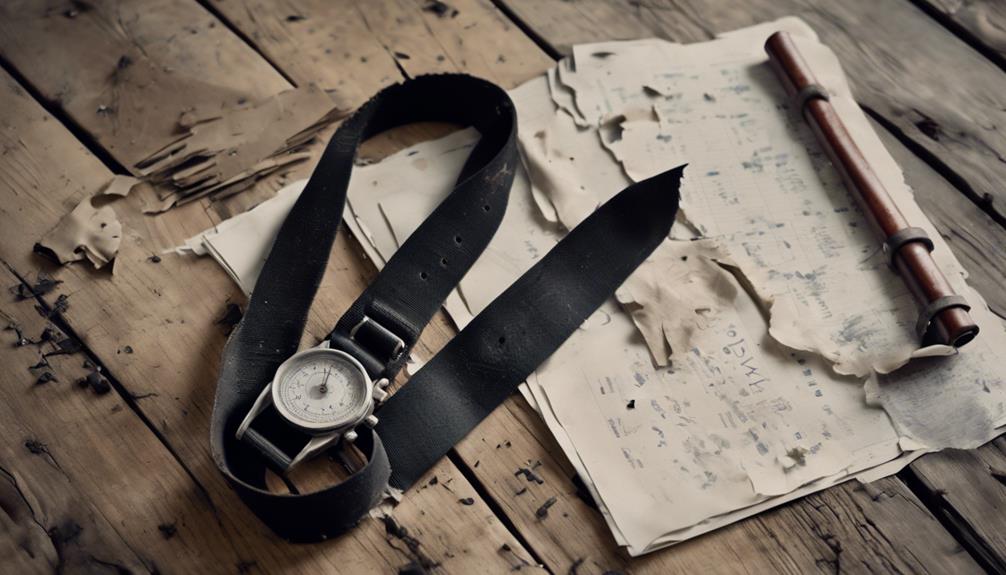
Your training break can greatly impact your body, leading to reduced muscle strength, stiffness, and diminished muscle memory.
When you return to martial arts training after time off, you're at a higher risk of injury, especially if you jump back in at full intensity.
To minimize risks, it's essential that you ease back into training, gradually rebuilding your strength, flexibility, and technique to avoid overexertion and fatigue.
Impact of Training Breaks
When returning to martial arts training after a break, you face a unique set of challenges that can significantly increase your risk of injury. Your muscles have stiffened, and flexibility has reduced, making you more susceptible to injuries.
Furthermore, research indicates that muscle memory diminishes during extended breaks, resulting in improper technique when resuming training, which elevates injury risk.
The following factors contribute to the increased risk of injuries after training breaks:
- Muscle stiffness and reduced flexibility lead to decreased range of motion and increased strain on joints and muscles.
- Diminished muscle memory results in poor technique, putting unnecessary stress on your body.
- Psychological factors, such as fear of injury, can alter your performance perception, leading to overexertion.
- Gradual reintroduction to training is vital, as jumping back into intense practice can cause fatigue and increase the likelihood of injuries.
It's important to acknowledge the impact of training breaks on your body and take necessary precautions to minimize the risk of injuries.
Risks After Time Off
Muscle stiffness, reduced flexibility, and diminished muscle memory are just a few of the physical consequences of taking a break from martial arts training. When you return to training after a break, you're at a higher risk of injury due to these changes.
Studies show that jumping back into training at full intensity increases your risk of injury due to overexertion and fatigue. Your perception of your ability versus your actual physical condition can also affect your performance, leading to a higher likelihood of injury.
The risks associated with returning to training after a break are significant. Research correlates extended breaks with increased injury severity, emphasizing the importance of mitigating these risks.
Your body needs time to readjust to the demands of martial arts training. If you don't allow for this readjustment period, you're more likely to experience muscle strain and improper technique, further increasing your risk of injury.
It's essential to acknowledge these risks and take steps to manage them effectively, ensuring a safe and successful return to training. By understanding the risks associated with returning to training after a break, you can take proactive measures to minimize them.
Easing Back Into Training
A break from martial arts training can have profound effects on the body, regardless of age. When you return to training after a hiatus, you're likely to experience muscle stiffness and reduced flexibility, which increase your risk of injury. This is because your muscle memory and physical conditioning have diminished, making it critical to ease back into training gradually.
To minimize your injury risk, consider the following:
- Gradual reintroduction: Gradually increase the intensity and duration of your workouts to allow your muscles and joints to adapt.
- Proper warm-up and cool-down: Always warm up before training and cool down afterwards to prevent muscle strain and promote recovery.
- Focus on technique: Prioritize proper technique over intensity to avoid putting unnecessary stress on your body.
- Listen to your body: Pay attention to your body's signals, and take regular breaks to avoid fatigue and prevent overexertion.
Proprioception and Injury Prevention
As you age, your proprioception – the ability to sense your body's position and movement – plays an increasingly vital role in preventing injuries during martial arts training.
By enhancing your proprioceptive feedback through slow warm-ups and structured training routines, you can greatly reduce your risk of injury and improve your overall performance.
Understanding Proprioception Benefits
Your body's ability to sense its position and movement in space, known as proprioception, plays a critical role in preventing injuries during martial arts training – particularly as you age beyond 40 and naturally experience decreased sensory feedback.
As you engage in dynamic movements, enhanced proprioception allows for quicker muscle contractions and better stabilization of joints, reducing the risk of hyperextension and other injuries.
Here are some benefits of improved proprioception:
- You'll experience reduced risk of injuries from hyperextension and other dynamic movements
- Your joints will be better stabilized, reducing the risk of strains and sprains
- Your reaction time will improve, allowing you to adapt to expected and unexpected movements
- You'll be less likely to experience injuries from improper stretching techniques, as your body will be able to sense its position and movement in space
Improving Injury Prevention Techniques
Proprioception is a crucial component of injury prevention, and enhancing this sense is key to reducing the risk of injuries during martial arts training, especially for martial artists over 40.
By engaging in slow warm-up routines, you allow your proprioceptive nerves to recalibrate, enhancing your body's ability to predict and respond to expected movements. This is essential for injury prevention, as it enables your muscles to contract and stabilize your joints during rapid movements, reducing the risk of hyperextension and other injuries.
To further improve injury prevention, focus on proper stretching techniques that align with your intended movements. Stretching within expected movement ranges stabilizes your joints and minimizes injury risk, while improper stretching techniques can lead to instability and potential harm.
Implementing structured warm-up protocols prepares both your muscles and joints for physical activity, greatly lowering the likelihood of injuries during training sessions.
Debunking Martial Arts Myths
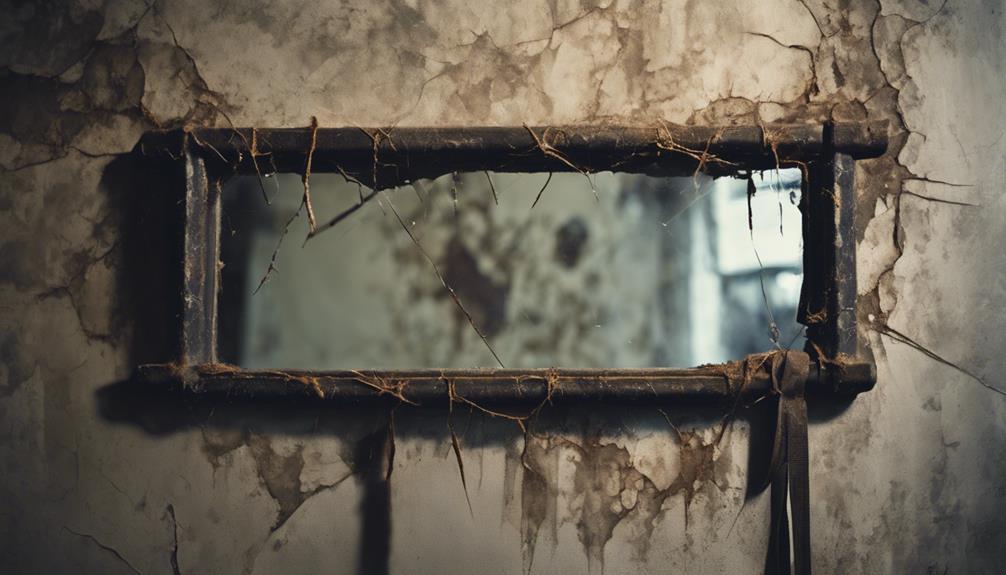
When it comes to martial arts, numerous myths surrounding injuries have been perpetuated, often causing unnecessary concern or reckless behavior among practitioners.
You've likely heard some of these myths, but it's time to set the record straight.
In reality, research shows that consistent practitioners are more prone to injuries than those returning from breaks, highlighting the importance of proper technique and training intensity.
Here are a few more myths debunked:
- The idea that high kicks can be performed naturally without training is unfounded; proper training is essential for developing the flexibility and strength necessary for executing such techniques safely.
- Gradual re-entry into training after a break is safer than jumping back into full intensity.
- Physical conditioning, not just age, plays a vital role in injury risk.
- Misunderstandings regarding injury causes can lead to perpetuation of myths within the martial arts community, emphasizing the need for education on safe training practices.
Safe Training Practices for Seniors
Frequently, older martial artists returning to training after a break make the important mistake of resuming full intensity immediately, putting themselves at a higher risk of injury due to decreased muscle strength and flexibility.
You must adopt safe training practices to mitigate this risk. Implement a structured warm-up routine that focuses on increasing flexibility and preparing your joints for the upcoming training session. This simple step can notably reduce the likelihood of injuries.
As you train, emphasize proper technique over power. This approach is essential for joint preservation and injury prevention, particularly for older martial artists who may experience stiffness and slower recovery.
Regular health assessments and injury screenings are also recommended to monitor your physical readiness for training and adjust your regimen accordingly.
Additionally, incorporate low-impact exercises and strength training to build resilience and maintain muscle strength, which is critical for supporting your joints and enhancing overall stability.
By following these guidelines, you can effectively prevent injuries and continue to practice martial arts safely and enjoyably.
Prioritizing injury prevention is vital to your long-term success in martial arts.
Managing Chronic Conditions
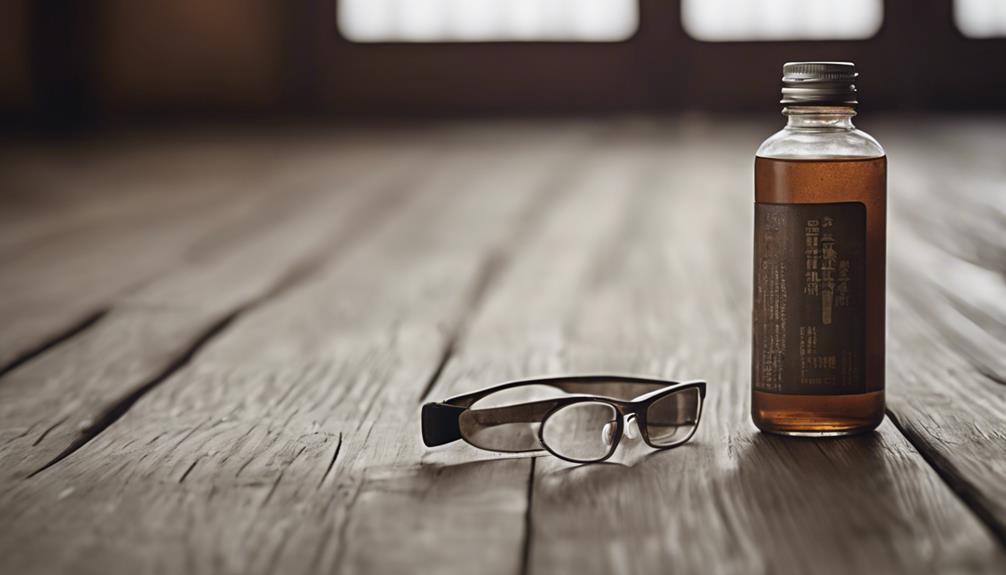
As you continue to train in martial arts over 40, managing chronic conditions becomes a priority to prevent exacerbating existing injuries or developing new ones.
You'll need to modify your training approaches to accommodate age-related changes, such as incorporating low-impact exercises and adjusting the frequency and intensity of your workouts.
Modifying Training Approaches
Effective training for martial artists over 40 requires a thoughtful approach to managing chronic conditions. As you age, your body's resilience and adaptability decrease, making it essential to modify your training approaches to accommodate ongoing issues such as knee or shoulder pain.
You'll need to focus on modifying exercises to reduce the impact on your joints and muscles. This can include adjusting techniques, reducing intensity, or incorporating alternative movements that don't exacerbate existing conditions.
Additionally, incorporating structured warm-up routines focusing on flexibility and joint stability will help prepare your body for the demands of training and mitigate injury risks.
Consider the following strategies:
- Modify exercises to reduce impact on joints and muscles
- Incorporate strength and core conditioning programs to enhance muscle resilience and support joint health
- Engage in regular health assessments and consultations with medical professionals to manage chronic conditions effectively
- Develop a gradual reintroduction to training after breaks to prevent injuries and promote flexibility
Maintaining Physical Wellbeing
Many martial artists over 40 experience a surge in chronic conditions, such as arthritis and joint pain, which can greatly increase their susceptibility to injuries during training.
As you age, your muscle strength and flexibility decrease, making you more prone to injuries. To mitigate this risk, it's vital to incorporate strength and core conditioning exercises into your routine, which will help preserve your joints and reduce the likelihood of injury.
Your recovery time from injuries also increases with age, so it's important to listen to your body and adjust your training intensity accordingly.
Proper nutrition plays a significant role in managing chronic conditions and inflammation. A healthy diet can greatly influence your energy levels and overall physical wellbeing.
Additionally, incorporating activities like yoga or focused stretching routines into your regimen can improve flexibility and aid in recovery, helping you manage stiffness and enhance your overall training experience.
Adapting to Physical Limitations
Adapting to Physical Limitations
Facing the inevitable physical changes that come with aging, you must adapt your martial arts training to accommodate your body's new limitations. As you age, you may experience joint stiffness, slower recovery times, and nagging injuries, particularly in your hips, shoulders, and knees.
To avoid exacerbating these issues, you need to adjust your training routine.
The following adjustments can help you adapt to your physical limitations:
- Modify exercises: Change your techniques to accommodate any nagging injuries, and avoid putting excessive stress on your joints.
- Gradually adjust training intensity: Reduce the intensity of your training sessions to prevent overexertion and fatigue.
- Incorporate strength and core conditioning: Strengthen your leg and core muscles to provide better joint support and stability during training.
- Emphasize proper technique over power: Focus on executing techniques correctly, rather than relying on brute force, to reduce the risk of injuries.
In Summary
As you navigate martial arts training past 40, your body becomes a sports car with high mileage – it still performs, but requires more maintenance. A study on older athletes shows that 70% of injuries occur due to overtraining, neglecting recovery time, or ignoring physical limitations. Just like a cars' engine, your body needs regular tune-ups and adjustments to run smoothly. Prioritize safe training practices, adapt to chronic conditions, and listen to your body to avoid costly repairs.


